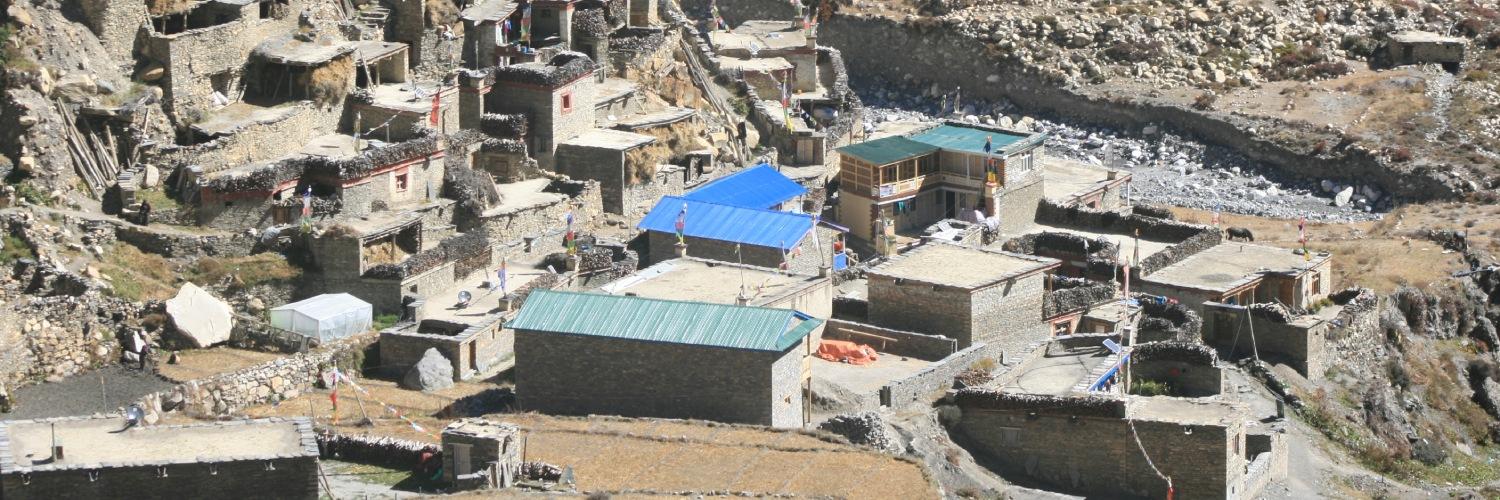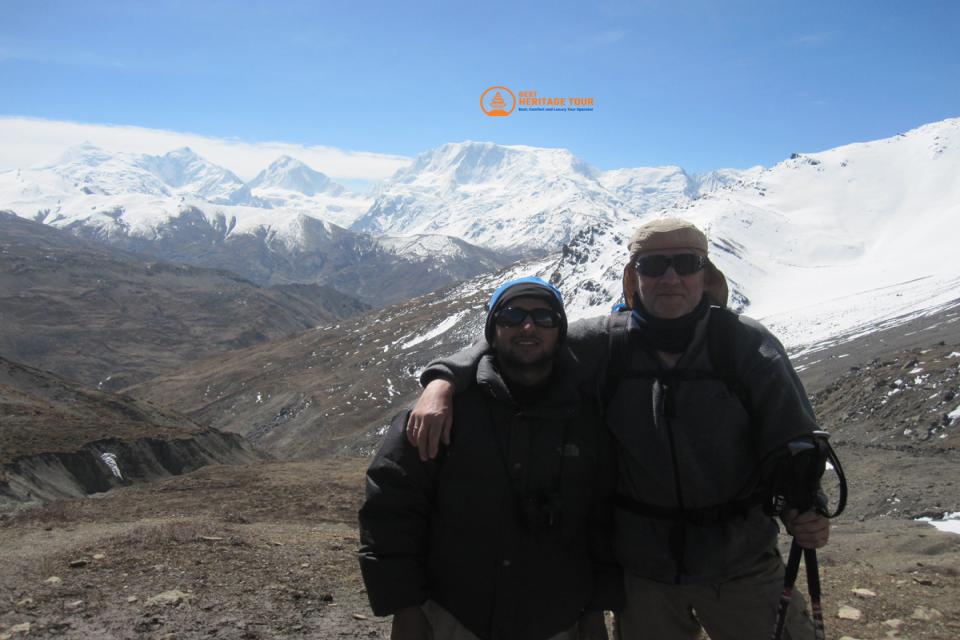Nepal is famed for iconic trekking routes like Everest Base Camp and the Annapurna Circuit, but nestled in the shadows of these giants’ lies an untouched gem- the Nar Phu Valley Trek. A remote and rugged journey into the mystical valleys of Nar and Phu, this trek is a true escape into Himalayan wilderness, Tibetan Buddhist culture, and stark alpine beauty.
If you're seeking an offbeat trek in Nepal, away from crowds yet bursting with soul-stirring landscapes and authentic mountain culture, the Nar Phu Valley Trek in 2025/2026 should top your list. It’s not just a trek; it’s an exploration of a mystical land that time seems to have forgotten.
Where Is Nar Phu Valley?
Hidden beyond the Annapurna region in north-central Nepal, the Nar Phu Valley lies close to the Tibetan border within the Manang District. Set inside the boundaries of the Annapurna Conservation Area but classified as a restricted region, Nar Phu was opened to foreigners only in 2002. This delayed exposure to outside influences has allowed it to retain a remarkable level of cultural and environmental authenticity.
The valley itself comprises two main villages- Nar and Phu, located at high altitudes and separated by jagged ridgelines, icy rivers, and stark wilderness. The journey to reach them takes you through deep pine forests, barren alpine plateaus, and centuries-old Buddhist settlements. The remoteness is striking- it often feels as though you've stepped into a Himalayan fairytale where the outside world simply doesn’t exist.
Why Choose Nar Phu Valley Trek in 2025/2026?
1. Experience the Undiscovered Nepal
Nar Phu offers a glimpse into a side of Nepal that most travelers miss. While other trails are bustling with trekkers, tea houses, and Wi-Fi, Nar Phu immerses you in silence, solitude, and simplicity. In many sections, you might go hours without encountering another group, allowing for a deep, meditative connection with nature. This solitude allows for a personal, introspective experience rarely found on Nepal’s more popular routes.
2. Rich Tibetan Buddhist Culture
The cultural significance of Nar Phu cannot be overstated. These valleys are home to ancient Tibetan Buddhist communities whose practices, architecture, and language have remained largely unchanged for centuries. As you trek, you’ll pass under intricately painted chortens, spin massive prayer wheels, and visit sacred monasteries where daily life revolves around spiritual rituals. The atmosphere here is one of deep reverence- it's a trek as much into spirituality as into nature.
3. Wild Himalayan Scenery
From snow-laden peaks to steep-sided gorges and wide glacial valleys, the terrain in Nar Phu is both dramatic and diverse. Expect to trek through wild landscapes surrounded by Himalayan giants such as Kangaru Himal, Himlung Himal, and Pisang Peak, all rising above 7,000 meters. The ever-changing topography- from coniferous forests to windswept plateaus keeps the trek visually engaging and geologically fascinating.
4. Authentic Village Life
Nar and Phu offer a rare window into indigenous high-altitude life. These are not tourist towns but functioning communities where locals herd yaks, spin wool, and prepare traditional foods over wood-fired stoves. Staying here means experiencing a way of life that has resisted the pressures of modern tourism. It’s common to be invited into homes for yak butter tea or homemade cheese, moments that turn a trek into a heartfelt memory.
5. Perfect for Off-the-Beaten-Path Trekkers
This is a trek for true adventurers- those looking for more than just spectacular views. The sense of remoteness, the cultural immersion, and the physical challenges combine to create an experience that is as emotionally enriching as it is physically demanding. It’s ideal for second-time visitors to Nepal or those who wish to avoid the commercialization found on more frequented trails.
Cultural Highlights of the Nar Phu Trek
1. Phu Gaon
A fortified Tibetan village surrounded by high cliffs and glacial winds, Phu is an ethereal place. The villagers live in stone houses stacked into the hillside, preserving centuries-old traditions. The Tashi Lhakhang Monastery, one of the region’s oldest and most revered, offers a spiritual atmosphere amid fluttering prayer flags. Life here is slow-paced, deeply spiritual, and still guided by lunar calendars and centuries-old customs.
2. Nar Village
Nar sits in a wide alpine basin flanked by snowy ridges. It is more populous than Phu and features vibrant village life, beautifully painted homes, and elaborately carved prayer stones. The villagers are renowned for their weaving skills and yak herding. A walk through Nar is a colorful sensory experience- the scent of juniper incense, the clatter of prayer wheels, and the sight of vibrant prayer flags flying above ancient homes.
3. Monastic Life at Nar Phedi
Staying at Nar Phedi Monastery is a trek highlight. The nuns here live humbly, practicing daily chants and meditations. Guests are welcome to join their prayer sessions and share simple vegetarian meals prepared with spiritual mindfulness. This stay is often remembered by trekkers as one of the most peaceful and profound nights of the entire journey.
Natural Highlights of the Nar Phu Trek
The Nar Phu Valley Trek is a dramatic showcase of Nepal's rugged Himalayan wilderness. As you step deeper into this isolated region, every bend in the trail unveils breathtaking scenery shaped by time, tectonics, and untouched nature. Here are the standout natural features that define the beauty of this trek:
1. Kang La Pass (5,320m) - A Himalayan Window to the Annapurnas
One of the most exhilarating highlights of the Nar Phu Valley Trek is crossing Kang La Pass, a towering alpine saddle standing at 5,320 meters. This high-altitude pass not only marks the transition from the remote Nar region into the more popular Annapurna Circuit, but also rewards trekkers with panoramic views of the snow-draped Annapurna Massif, the iconic Chulu East and West peaks, Gangapurna, and the sweeping Marsyangdi River Valley far below.
The ascent is challenging but deeply rewarding, especially at sunrise when golden light bathes the mountains and valleys in surreal hues. Standing atop Kang La is a moment of triumph, perspective, and pure Himalayan grandeur- truly a photographer’s dream and a trekker’s unforgettable memory.
2. Himalayan Wildlife Encounters - Raw Nature in Action
Despite its remote and harsh terrain, Nar Phu Valley is rich in biodiversity, making it a silent sanctuary for some of the Himalaya's most elusive creatures. You might spot herds of blue sheep (bharal) gracefully navigating rocky cliffs, or see Himalayan griffons and lammergeiers soaring overhead with their vast wingspans riding the thermal winds.
For the truly lucky (and quiet) observer, there’s the slim chance of glimpsing a snow leopard- one of the most mystical and endangered predators in the world. The region’s remoteness allows these creatures to thrive undisturbed, offering a glimpse into an ecosystem where nature still reigns supreme. Yaks and dzos, vital to local livelihoods, graze in high-altitude meadows and add to the pastoral charm of the journey.
3. Rugged Canyons, Rivers, and Waterfalls - Drama in the Landscape
From the moment you leave Koto, the trail into Nar Phu Valley plunges into a dramatically different world. Deep, narrow canyons carved by centuries of glacial meltwater guide you through roaring river gorges and past thunderous waterfalls. Wooden bridges span roaring streams, while the trail often clings to sheer cliff walls, offering thrilling and sometimes humbling- passages.
These gorges not only provide a stark contrast to the open meadows higher up but also create an acoustic landscape filled with rushing water, echoing winds, and the occasional call of mountain birds. The dynamic interplay of stone, water, and sky keeps the trek visually captivating and emotionally immersive.
4. Glacial Valleys Beyond Meta and Naar - Sculpted by Wind and Time
As you ascend past the settlements of Meta and Naar, the landscape transforms dramatically into something out of a dream or perhaps a forgotten planet. The terrain becomes barren, high-altitude desert, marked by wind-eroded cliffs, pale glacial scree, and fossil-laden rock faces. These wide-open spaces are starkly beautiful, with colors shifting from rust-reds and grays to silvery whites, depending on the angle of the sun.
The glacial valleys here feel vast and timeless, sculpted over millennia by the slow, steady movement of ice and wind. Despite their harshness, they hold a haunting serenity, and it’s easy to feel a deep connection with nature’s raw elements. The stillness is profound, occasionally broken by the fluttering of prayer flags or the distant whistle of the wind- a fitting stage for one of Nepal’s most remote and surreal trekking experiences.
Difficulty Level of Nar Phu Trek
The Nar Phu Valley Trek is considered moderate to challenging. While not technically difficult, it includes:
-
Long walking days (5-8 hours)
-
High altitudes (max. 5320m at Kang La Pass)
-
Remote conditions with basic tea houses
Good fitness, proper acclimatization, and some trekking experience are recommended. Hiring a guide is essential as it’s a restricted area trek.
Best Time to Trek Nar Phu Valley
Spring (March to May)
-
Wildflowers in bloom
-
Clear skies and excellent visibility
Autumn (September to November)
-
Stable weather
-
Perfect mountain views
Avoid the monsoon season (June to August) and harsh winters (December to February), when snow can block passes and lodges may close.
Permits Required
As a restricted area, you’ll need special permits:
-
Restricted Area Permit (RAP) - USD $100 per week (Sep-Nov), USD $75 per week (Dec-Aug)
-
Annapurna Conservation Area Permit (ACAP) - USD $30
-
Trekkers’ Information Management System (TIMS) - USD $20
Permits must be obtained through a government-registered trekking agency like Best Heritage Tour.
Accommodation and Food on the Trek
Expect basic teahouses with clean rooms, blankets, and shared toilets. Some remote villages have monastery stays or communal homes.
Food is typically local and hearty:
-
Dal Bhat (lentils, rice, curry)
-
Tsampa (roasted barley flour)
-
Yak butter tea
-
Momos and Tibetan bread
Packing Essentials for Nar Phu Trek
-
Sleeping bag (rated -15°C or lower)
-
Warm layers and down jacket
-
Sturdy hiking boots
-
Sunscreen and lip balm
-
Water purification tablets
-
Headlamp and power bank
-
Snacks and rehydration salts
Combining Nar Phu with Annapurna Circuit
Want a longer adventure? You can extend your trek from Nar Phu into the classic Annapurna Circuit, crossing Thorong La Pass (5416m) and descending into Muktinath and Jomsom. This combined trek offers the best of both worlds - remote valleys and iconic landmarks.
Final Thoughts
The Nar Phu Valley Trek is Nepal’s best-kept secret- a journey that fuses raw Himalayan landscapes with ancient Tibetan culture. As travel in Nepal continues to evolve, this trek stands out as a soul-stirring alternative to crowded routes.
Whether you’re a seasoned trekker or a cultural explorer, 2025/2026 is the perfect time to discover Nar and Phu - before the rest of the world catches on.
Plan Your Nar Phu Valley Adventure with Us
Ready to experience the raw, untouched beauty of Nar Phu Valley? Whether you're a seasoned trekker or an adventurous soul seeking the road less traveled, the Nar Phu Valley Trek promises a journey rich in Himalayan culture, dramatic landscapes, and genuine encounters with Nepal’s hidden highland communities.
Let Best Heritage Tour make your adventure seamless and unforgettable. From experienced guides and personalized itineraries to responsible tourism practices, we ensure your journey is not only memorable but also meaningful.
Contact Best Heritage Tour
Website: www.bestheritagetour.com
Email: info@bestheritagetour.com
Phone/WhatsApp: +977-9851149197
Office Location: Thamel, Kathmandu, Nepal
Let’s craft your perfect Himalayan escape! Reach out today for a free consultation or to customize your trek.
Author: Best Heritage Tour
Date: 30th May, 2025


